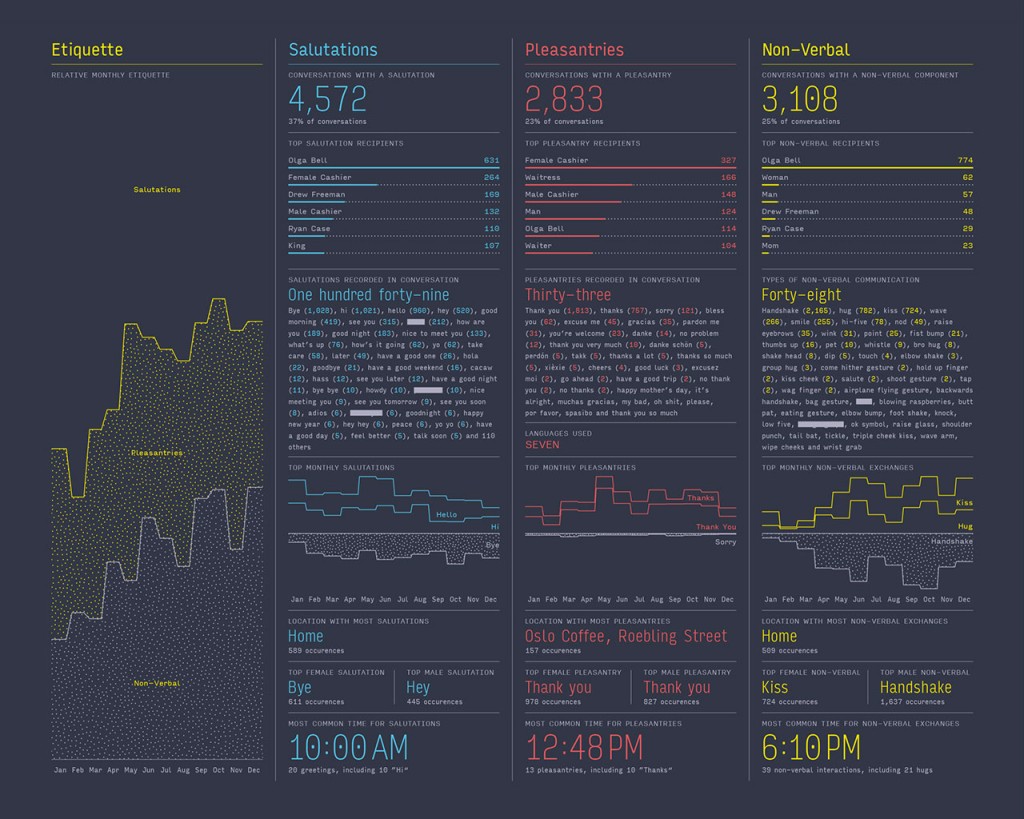Technology, almost by definition, is always changing. Each new tool we develop has the capacity to be both exciting and terrifying: we are always just one tool away from changing the world forever. At the museum, we’re putting together an exhibition about how much information we create in our increasingly connected lives and how that information is used to detect patterns in the billions of people on the planet. The more we investigate this new way of learning about people, the more we are amazed at its potential.
Tracking devices have forced their way in our lives in recent years. Technologies like cameras, GPS and telecommunications have become cheap and easy to produce, opening the doorway to having more and more of our lives recorded, with everything about us being quantifiable. The steps we take in a day, where we go, how long we spend on the bus to get to work, how many calories we consume, how many times we text our friends in the day, what we enjoy reading… So much can be counted and recorded that some people have even made it their full-time obsession in what is called the ‘quantified self’ movement.
Some individuals, like Nick Felton in the United States, even publish the results of his findings in a book. Want to know how many high-fives he received in a year? In 2013, he got 78, significantly fewer than his 2,165 handshakes.

This method of counting and measuring allows us to create machines that behave more and more like people. By examining our lives in numbers and patterns, we can design computer programs that seek out and mimic those patterns, even going so far as to copy how we interact with one another.
The ability to look at language as codes and patterns shocked students at the Georgia Institute of Technology in May 2016, when they found out that the teacher’s assistant that they had been emailing back and forth was actually a computer program. It was able to create realistic communication by examining 40 thousand correspondences with students, identifying patterns of language and information and feeding it back to the students. This wasn’t limited to questions about coursework, either: the artificial intelligence also participated in group discussions online, leaving none the wiser.
It is acceptable to dismiss this example of machine learning as being applicable to academics, but surely there are some fields, like creativity, that are stumped by computers… right?
In April 2016, a collaboration of art historians and data scientists completed The Next Rembrandt Project, where a computer was programmed to look at the collected works of Rembrandt and then create an original work in the same style.
Meanwhile, an entire West End musical was written by a computer program and performed by human actors. The musical, Beyond the Fence, was created by examining successful stage productions for plot, melody, theme and even the size of the cast.
Learning machines are opening a new door to the future, one where people are being broken down into patterns. Artificial intelligence is often attributed to science fiction, but it isn’t even something that is still on its way. It’s already arrived.
Our Lives in Data opens at the Science Museum on 15 July 2016. Find out more at sciencemuseum.org.uk/data